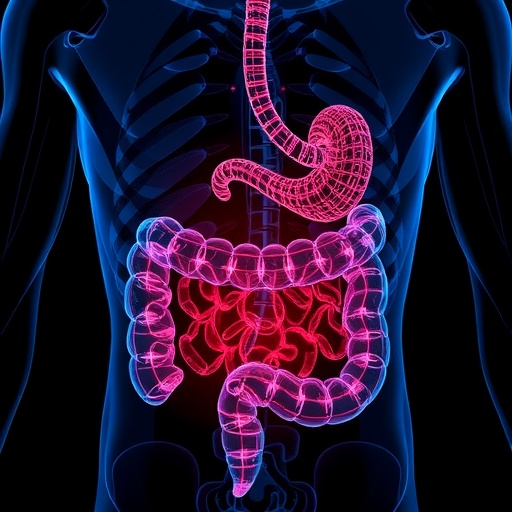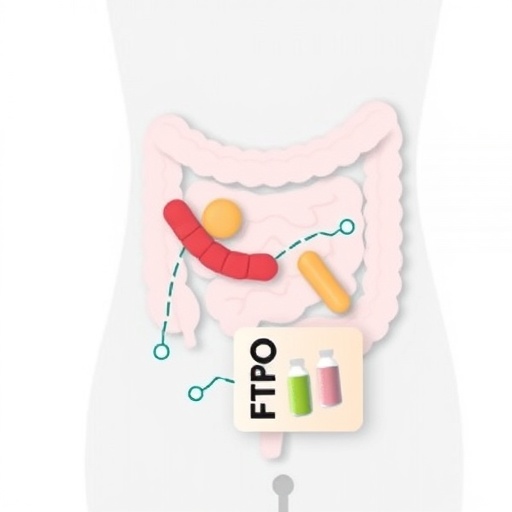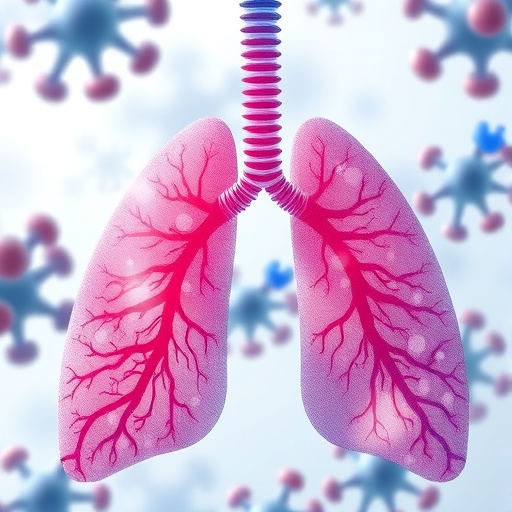In a groundbreaking advancement poised to revolutionize colorectal cancer research, scientists at the University of California, Irvine have unveiled a three-dimensional human colon model integrated with cutting-edge bioelectronics, setting new standards for precision medicine and drug development. This “3D in vivo mimicking human colon” (3D-IVM-HC) model heralds a transformative shift away from traditional animal testing, offering a highly replicable, ethical, and cost-efficient platform that closely mirrors human physiological conditions.
Published in the prestigious journal Advanced Science, this innovation stems from meticulous engineering within UC Irvine’s Samueli School of Engineering. The researchers meticulously crafted a miniaturized, approximately 5-by-10-millimeter colon replica that embodies vital anatomical elements of the human colon — including its distinctive liminal curvature, a sophisticated multilayered cellular architecture, and the spontaneous formation of cryptlike invaginations universally recognized as crucial to colon function and cancer biology.
Rahim Esfandyar-pour, assistant professor of electrical engineering and computer science at UC Irvine and senior author of the study, emphasizes that the precise three-dimensional topology of the 3D-IVM-HC model is central to sustaining authentic cellular dynamics. He elucidates that this structural realism enables the recreation of microenvironmental cues governing cell behavior in a manner unattainable by conventional flat cultures or even some animal models. This breakthrough lays the groundwork for enhanced drug screening fidelity and personalized therapeutic testing that can predict clinical patient outcomes with markedly improved accuracy.
Esfandyar-pour cites fundamental limitations with existing preclinical models, notably that roughly 50% of toxicological results derived from rodent experiments fail to translate effectively to human clinical scenarios. He highlights that traditional animal models insufficiently recapitulate key hallmarks of human tumor biology, posing formidable challenges to early-phase drug development. In addition to biological incongruities, he notes the staggering financial overhead of these animal-based studies—which can accumulate to multimillion-dollar expenses over multiple years—undermining scalability and responsiveness in urgent therapeutic contexts.
The 3D-IVM-HC model leverages a sophisticated bioelectronic integration to bridge these gaps, yielding a sustainable, ethical, and human-relevant experimental platform. Its core structure is fabricated from a biocompatible scaffold composed of gelatin methacrylate and alginate, materials selected for their ability to emulate the soft, pliable nature of colon tissue. This scaffold provides a supportive matrix upon which human epithelial colon cells are cultured on the interior surface, mirroring the in vivo luminal lining, while fibroblasts embedded in the outer scaffold layer recreate the mucosal microenvironment that plays a critical role in tissue homeostasis and disease progression.
This meticulously engineered cellular configuration fosters enhanced cell-to-cell communication pathways, resulting in quadruple the cell density observed in conventional two-dimensional cultures. This dense, dynamic cellular assembly not only promotes robust barrier integrity, akin to the human colon’s protective function, but also establishes a more physiologically pertinent milieu for testing the complex interplay between cancer therapeutics and tumor cells.
Of profound significance, the 3D-IVM-HC model demonstrates superior performance over existing culture systems in drug efficacy testing. When subjected to 5-fluorouracil—a widely administered chemotherapy agent—colon cancer cells within the model manifested striking resistance, necessitating drug concentrations approximately tenfold higher to achieve cytotoxic effects equivalent to those observed in standard petri dish cultures. This resistance parallels the clinical reality faced in oncology, underscoring the model’s unparalleled ability to recapitulate human tumor drug response and thus its potential to improve therapeutic screening and dosing paradigms.
Beyond standard pharmacological evaluation, the model is envisioned as a cornerstone for truly personalized medicine. With the capacity to cultivate patient-derived cells obtained from tumor biopsies, it becomes feasible to generate individualized mini-colons that can rapidly assess and predict therapeutic efficacy on a patient-specific basis. This approach opens transformative avenues for tailoring treatment regimens that maximize clinical benefits while minimizing adverse effects.
Remarkably, the development and maturation of the 3D-IVM-HC model require approximately two weeks, with subsequent drug testing completed within days—a timeline drastically reduced compared to protracted animal studies. This accelerated process not only enhances throughput but simultaneously lowers research costs and ethical concerns, heralding a new era where preclinical trials become more responsive to patient needs and research demands.
Esfandyar-pour asserts that this platform stands to deepen mechanistic insights into colorectal cancer pathogenesis, facilitating more accurate predictions of therapeutic responses, and expediting the pipeline for high-throughput drug discovery. The integration of bioelectronics also allows for real-time monitoring and manipulation of disease states within the model, deepening the potential for dynamic experimental control and optimization.
From an implementation perspective, hospitals and research laboratories could adopt this model as a frontline tool for ethical, efficient, and precise preclinical testing. If widely embraced, it could dismantle long-standing bottlenecks in oncology drug development, yielding faster, safer, and more affordable pathways from bench to bedside improvement in clinical outcomes globally.
In sum, the UC Irvine team’s bold leap towards bridging biology and engineering sets a new paradigm for cancer research tools. By faithfully reproducing the colon’s complex structural and functional features on a micro-scale, the 3D-IVM-HC model stands as a beacon for nonanimal, patient-aligned experimental models, promising enhanced translatability, reduced animal use, and accelerated discovery of life-saving therapies in colorectal cancer and beyond.
Subject of Research: Not applicable
Article Title: Development of a 3D Human Colon Model Along with Bioelectronics for the Induction and Monitoring of Diseases
News Publication Date: 15-Oct-2025
Web References:
https://advanced.onlinelibrary.wiley.com/doi/10.1002/advs.202506377
http://dx.doi.org/10.1002/advs.202506377
Keywords: Colorectal cancer, Biochemical engineering
Tags: 3D human colon simulationadvanced drug testing platformbioelectronic artificial coloncancer biology research toolscolorectal cancer research modelethical alternatives to animal testingmicroenvironmental cues in cell behaviormimicking human physiologymultilayered cellular architectureprecision medicine innovationstransformative disease research technologiesUC Irvine engineering breakthroughs





